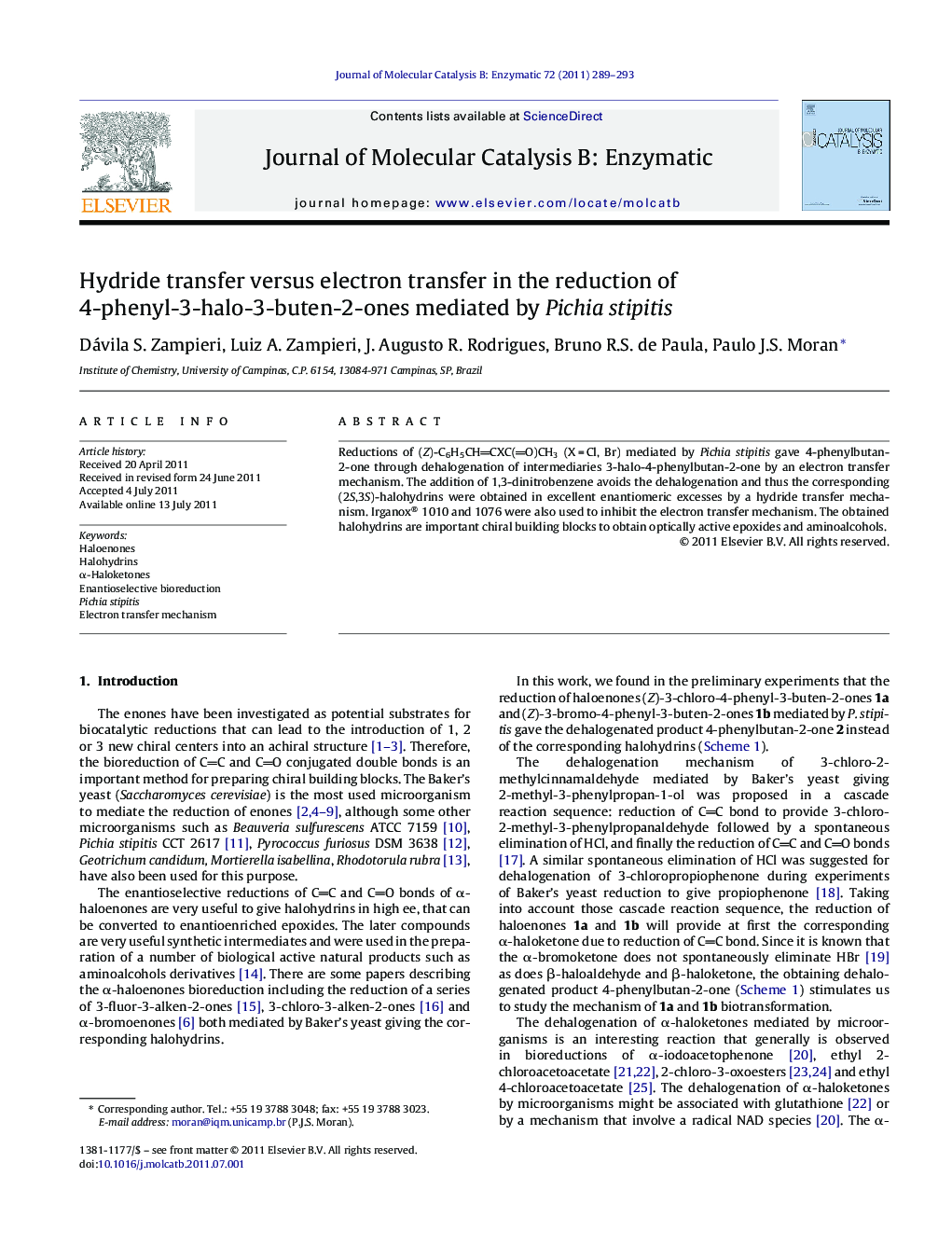| کد مقاله | کد نشریه | سال انتشار | مقاله انگلیسی | نسخه تمام متن |
|---|---|---|---|---|
| 70196 | 48814 | 2011 | 5 صفحه PDF | دانلود رایگان |

Reductions of (Z)-C6H5CHCXC(O)CH3 (X = Cl, Br) mediated by Pichia stipitis gave 4-phenylbutan-2-one through dehalogenation of intermediaries 3-halo-4-phenylbutan-2-one by an electron transfer mechanism. The addition of 1,3-dinitrobenzene avoids the dehalogenation and thus the corresponding (2S,3S)-halohydrins were obtained in excellent enantiomeric excesses by a hydride transfer mechanism. Irganox® 1010 and 1076 were also used to inhibit the electron transfer mechanism. The obtained halohydrins are important chiral building blocks to obtain optically active epoxides and aminoalcohols.
Figure optionsDownload as PowerPoint slideHighlights
► Reduction of 1a and 1b mediated by Pichia stipitis gave 2.
► The transient 3a and 3b were detected. Addition of DNB, an efficient radical scavenger, inhibited the formation of 2.
► Thus, (2S,3S)-4a and (2S,3S)-4b were produced by an hydride transfer mechanism.
Journal: Journal of Molecular Catalysis B: Enzymatic - Volume 72, Issues 3–4, November 2011, Pages 289–293